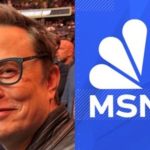Tesla plans to add a new radar product to its vehicles in mid-January, according to documents posted with the Federal Communications Commission.
The disclosure, which was first reported by Electrek, comes as the company faces scrutiny over the safety and capabilities of its standard advanced driver assistance system known as Autopilot and the $15,000 optional upgraded product branded as “Full Self-Driving.” Tesla FSD beta software offers some automated driving features but is not a self-driving system.
The luxury EV-maker has long claimed it could reach full autonomy through a “vision only” approach that shuns other sensors like lidar and radar in favor of cameras and a deep neural network that quickly processes a vehicle’s surroundings and responds in real time. Tesla CEO Elon Musk previously promised to “solve” full self-driving by the end of this year (he’s also promised Tesla would get there every year for roughly nine years now). He has recently admitted the problem will take longer to solve.
And perhaps, as every other autonomous vehicle technologist says, it’s not actually achievable yet through cameras alone.
The company began removing radar from its vehicles last May. In October, Tesla removed its 12 ultrasonic sensors from Model 3 and Model Y vehicles built for North America, Europe, the Middle East and Taiwan. Ultrasonic sensors measure distance via ultrasonic waves and are used as proximity sensors to support anti-collision safety systems, particularly in parking use cases.
Now it appears radar is back. It’s not yet clear which models will get the new radar. The type of radar Tesla intends to market next year is of a frequency that’s allocated by the FCC for ADAS use cases, according to Ram Machness, chief business officer at Arbe Robotics, which produces ultra-high-resolution 4D imaging radar.
Tesla had originally filed with the FCC to use the new radar — which is described in filings as “76-77 GHz Automotive Radar” — in its vehicles back in June.
“From the frequency of operation (76-77GHz) as well as the mechanical design of the sensor from Tesla’s FCC filing, it appears that this radar would be utilized in ADAS applications,” Steven Hong, VP and general manager of radar technology at semiconductor company Ambarella, told TechCrunch.
He noted that while the performance of this ‘edge’ radar sensor will be limited, it’s a positive development that Tesla is looking to add radar to its perception stack for safety-critical, robust performance.
Earlier this year, the FCC had granted a confidential treatment to Tesla in order to keep the details of the new radar under wraps. Late last month, Tesla applied to extend that confidentiality treatment another 60 days from its date of expiration, which is December 7.
The authorization letter to the FCC reads: “…this device will not be marketed until Mid-January 2023. To avoid any unnecessary disclosure and competitive harm before our product launching, we would like to request above exhibits to be held for another 60 days until 2023-02-07.”
The FCC filings show that the regulator has granted Tesla’s request for extended confidentiality.
Tesla appears to be turning back to radar for its vehicles by Rebecca Bellan originally published on TechCrunch






